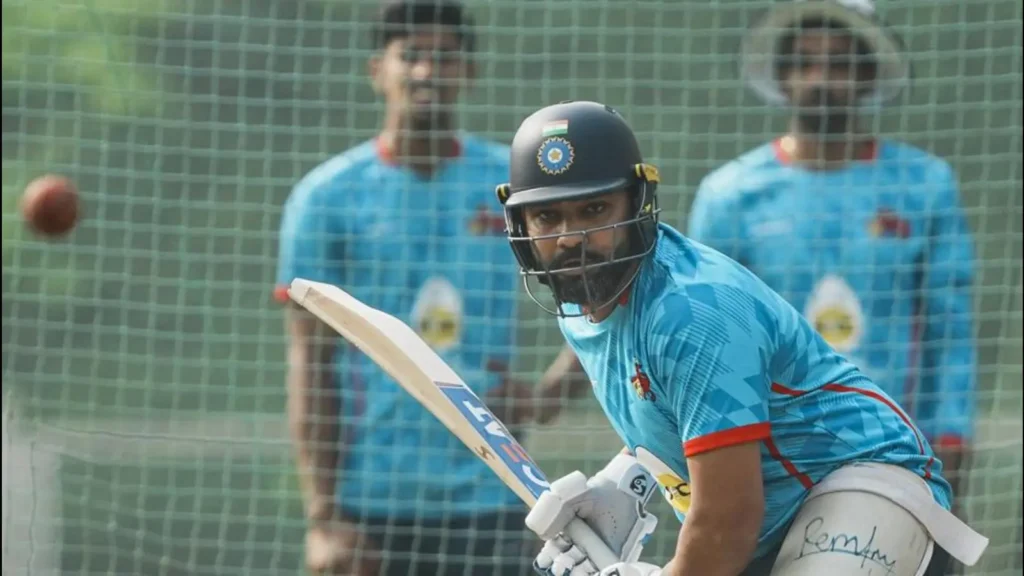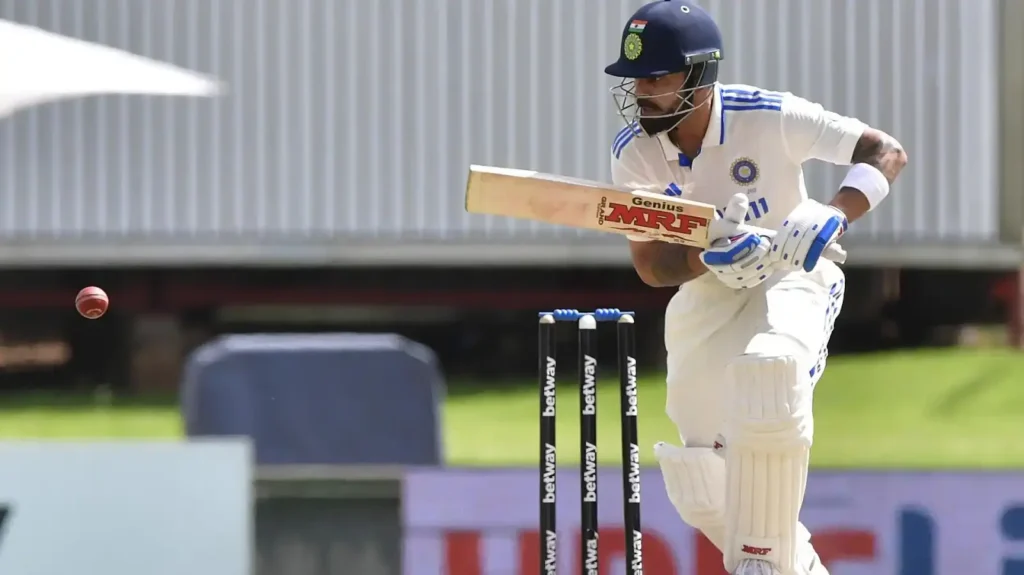The Ranji Trophy isn’t some casual tournament. It’s the place where Indian cricket sorts out who’s got the steel to go the distance. It’s long, tough, unforgiving—and that’s exactly why it’s the only road that counts if you’re serious about wearing the India jersey in Test cricket.
Started back in 1934 when the game was still taking root across the country, it was first called The Cricket Championship of India. Later, it was renamed after Kumar Shri Ranjitsinhji—the man who changed the game with that ridiculous wristwork of his in England. But don’t get caught up in the nostalgia. The modern Ranji Trophy is a war of attrition. Bowlers toil, batters grind, and mistakes get punished.
Every player who’s meant anything in Indian Test cricket has taken this route. Rahul Dravid didn’t become “The Wall” in a day. He built it brick by brick on flat wickets in Baroda and green ones in Delhi. Laxman? He wore bowlers down like a lad pulling weeds with his bare hands. Pujara? That man treats bowlers like chewing gum—one long, slow stretch until they snap.
If you think how to play in Ranji Trophy is just about talent, you’re kidding yourself. It’s about discipline. About turning up early, leaving late, and doing the job when nobody’s watching. You’ll get judged for your attitude just as much as your technique. It’s a bit like using inout in Swift—if you don’t understand how values change and move behind the scenes, you’re missing the whole point.
This article lays everything out in detail — how to start from scratch, get into the system, pass the selection filters, and prove you have the courage to stand the test of time. We’re talking trials, tournaments, and the ugly truths about what works and what doesn’t.
Doesn’t matter if you’re a kid who’s making runs for fun or someone who’s come back from injury with a chip on their shoulder. If you’re willing to put in the work and live the grind, this is your map. Ignore it, and you’re just another bloke with dreams and no plan.

Decoding the Ranji Trophy Structure
The Ranji Trophy embraces a classic blueprint, infused with Indian intricacy. Spanning November to March, it kicks off with a league phase: teams split into Elite and Plate divisions clash in round-robin duels. Points flow not only from victories but also from first-innings edges in stalemates—a first-class quirk that prizes supremacy over mere outcomes.
Standout squads advance to the knockout rounds: quarterfinals, semifinals, and a climactic finale. Each clash spans four days, granting both sides two turns at bat. Players must hunker down, bide their time, and chisel runs or scalps across grueling sessions—traits that sculpt genuine Test cricketers.
Most contingents hail from Indian states—think Karnataka, Mumbai, or Tamil Nadu—while others, like Services or Railways, stem from institutions. All fall under state cricket bodies overseen by the BCCI.
How Ranji Stacks Up Against Other Indian Domestic Events
| Feature | Ranji Trophy | Vijay Hazare Trophy | Syed Mushtaq Ali Trophy |
| Style | First-class (4-day) | 50-over | T20 |
| Entry | State & institution | State & institution | State & institution |
| Goal | Test talent pipeline | ODI proving ground | T20/IPL launchpad |
| Schedule | Full season (Nov–Mar) | Brief window | Tight sprint |
Dream of Test glory? The Ranji path is non-negotiable.

Who Qualifies for the Ranji Trophy?
Entry isn’t a free-for-all. There’s a ladder to ascend. It starts with your state’s cricket association. From Gujarat to Bengal, each maintains a roster of registered athletes. Breaking into that pool hinges on shining in youth leagues, club fixtures, or regional showdowns.
Indian citizenship is mandatory, though overseas players of Indian descent can seek rare BCCI approval. Age isn’t capped officially, but most squad members hover in their 20s—yet exceptional form can override the calendar. Switching states? You’ll likely need a season’s pause or a No Objection Certificate (NOC) to transfer allegiance.
Core Entry Requirements
- Enlisted with a state cricket body
- Strong showings in junior or local contests
- Indian nationality (special clearance for exceptions)
- Adequate fitness and professionalism

Your Step-by-Step Path to Ranji Glory
Curious about cracking the Ranji Trophy? Here’s the stark reality: no quick fixes exist. It’s a climb, and every step counts. Below is the route from street games to first-class whites:
- Sign Up with a Club
Join a reputable outfit tied to your state body. Expect league play, practice drills, and a growing stat sheet. - Shine at District Level
Club success opens doors to district scrutiny. Coaches and scouts begin noting prospects here. - Tackle State Trials
District standouts face zonal or statewide tryouts. These are unforgiving—a single off day might delay you a year. - Dominate Age-Group Events
BCCI’s U-16 (Vijay Merchant), U-19 (Cooch Behar), and U-23 (CK Nayudu) tournaments pave the official road to Ranji. - Earn a State Call-Up
Catch the right eyes, and you’ll land in the Ranji setup—often warming the bench first. Train hard, seize your moment. - Secure Your Place
Piling runs or snaring wickets isn’t sufficient. Consistency is king. Stumble too often, and you’re sidelined.
Pivotal Milestones
- A century in the Cooch Behar Trophy
- District-to-state camp promotion
- U-23 CK Nayudu Trophy appearance
- Guidance from a coach with selector ties
Skills & Preparation: What It Takes to Excel
Natural ability is a start, but don’t fool yourself—it won’t carry you far on its own. The Ranji Trophy doesn’t hand out spots for talent alone. You’ve got to be polished, consistent, and prepared to outwork everyone in the room. This isn’t a weekend tournament in your colony. This is first-class cricket, and it demands serious tools.
Technique
You don’t survive four-day matches with flair. You survive by doing the basics, ball after ball. Batters need control. Footwork sharp. Eyes steady. The lads who score here are the ones who can bat till stumps, not the ones who swing from the hip. Bowlers? You need control over seam, understand angles, and have the lungs to bowl your third spell of the day when the wicket’s flat and nothing’s happening. That’s what selectors notice.
Tactics
The best players don’t just play—they think. They know what the pitch is doing, where to bowl, when to shift gears. They know who’s twitchy outside off, who doesn’t like short stuff. Smart players make better decisions under pressure. And in Ranji, pressure shows up every session.
Fitness
Ranji breaks the lazy. If you can’t get through long sessions without falling apart, forget it. Four days in the sun, running laps, fielding till your back gives out. Fitness isn’t a bonus—it’s survival. The top teams travel with physios and strength coaches now. That’s not luxury. That’s necessity.
Mentality
You’ll get dropped. You’ll get overlooked. You’ll get run out on 49 when your place is on the line. And you’ll have to come back again. What separates the long-timers from the one-season wonders is how they handle that grind. You’ve got to want it more than comfort, more than sleep, more than excuses.
“Ranji isn’t about earning a paycheck—it’s about carving a legacy. Each match is a tryout for India.” — Rahul Dravid, India A & NCA Head Coach

How Selectors Judge You
Breaking into a Ranji lineup is daunting. Holding your spot? A steeper challenge. Every delivery faced, spell bowled, or fielding effort is dissected.
Selectors blend stats with intuition. They scout games, consult mentors, assess trials, and probe demeanor. BCCI’s regional and national panels, often ex-players, spot the gap between hollow numbers and clutch performers.
Averages don’t tell the full story. Steady output beats sporadic brilliance. A gritty half-century on a lively track might outshine a double-ton on a road. Pressure moments—knockouts, hostile conditions—reveal the clutch.
Tech plays a role too. Video breakdowns now dissect form, expose flaws, and study foes. Talent alone won’t cut it—growth is tracked. Attitude seals fates: preparation, poise, and grit under fire are non-negotiable.

Life as a Ranji Cricketer
Crack the squad, and your world shifts—but glamour’s absent. Expect train rides or budget flights, modest lodgings, and uneven surfaces.
Training doubles during match weeks: morning conditioning, evening nets. Diets tighten, meetings multiply, and rival footage fills downtime—all while vying for your XI berth.
Payoff exists. BCCI’s pay scale offers ₹1.4–1.6 lakhs per game for starters, with reserves earning less. A full campaign might net ₹15–20 lakhs—solid, not lavish. IPL eyes linger too; a standout spell or stroke could spark a franchise trial.
Yet pressure looms. A lean season risks demotion. A fitness lapse benches you. It’s a relentless spotlight—perfect for those built to prove they’re India-ready.
The Quest for Greatness
The Ranji Trophy isn’t for the faint-hearted. It’s grueling—endless days, solitary nights, ceaseless journeys, and tension that clings.
But for cricket’s true devotees, it’s hallowed turf. Beyond crafting epic knocks, you’ll master rebounding from flops, defying doubters, and thriving on hostile decks. Discipline, patience, and perseverance outweigh any trick shot. Commit fully, outlast the quitters, and you’ll wear those whites. Icons from Kapil Dev to Rohit Sharma all did.
This isn’t just a skill test—it’s a hunger gauge. That’s why it gates India’s cricket elite.
Five Must-Have Qualities
- Composure: Face tough spells and tougher calls unflinchingly.
- Drive: Talent without grind is wasted.
- Flexibility: Thrive on seamers, spinners, or anything else.
- Grit: Rebound from knocks—physical or otherwise.
- Passion: Love the marathon, or step aside.
Frequently Asked Questions
1. Can anyone aim for Ranji?
Yes, but start low—clubs, districts, trials. Climb from there.
2. Is club cricket a must?
Absolutely. It’s your launchpad for visibility.
3. Age cutoff for Ranji?
None formally. Debuts peak at 18–25, but results trump years.
4. How do selectors spot talent?
Runs, wickets, clutch plays in BCCI events—and trial fire.
5. Ranji-to-India odds?
Nearly all Test stars rose here. It’s the gate—unless you’re extraterrestrial.
